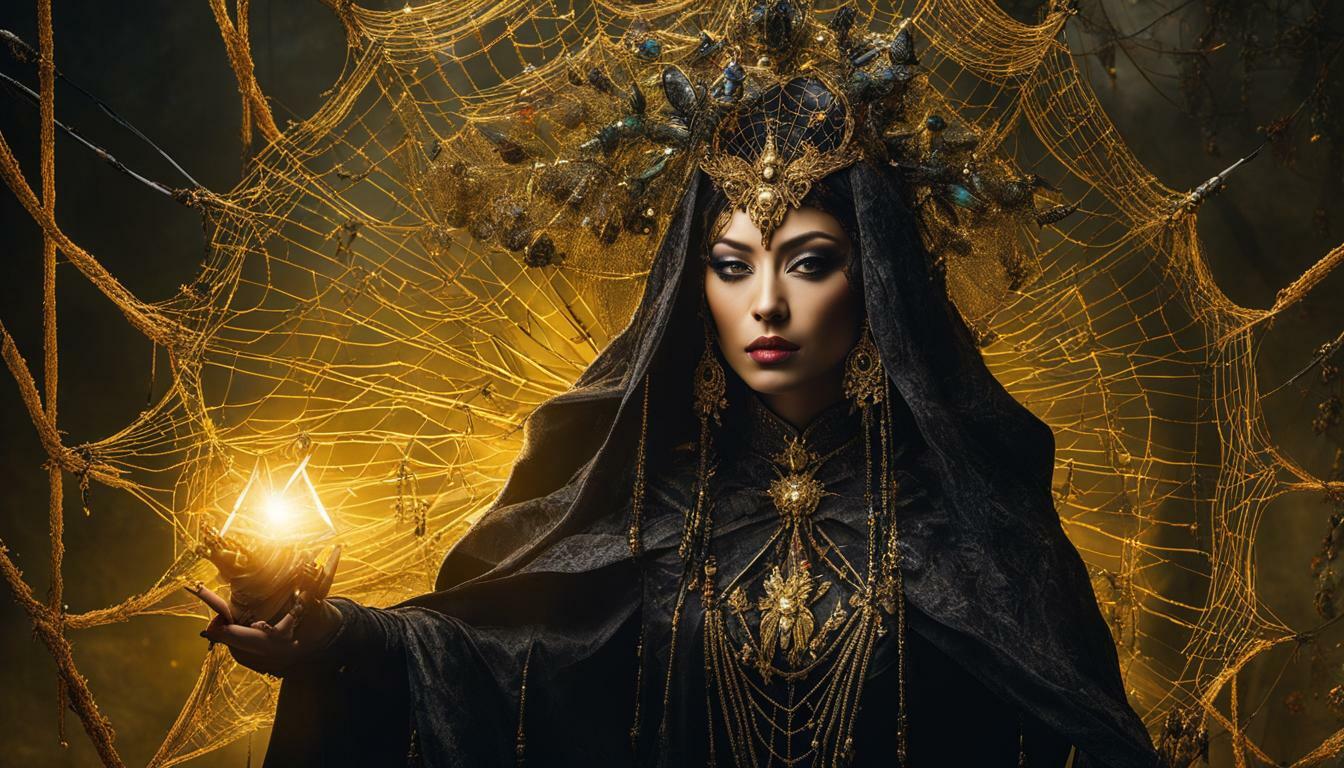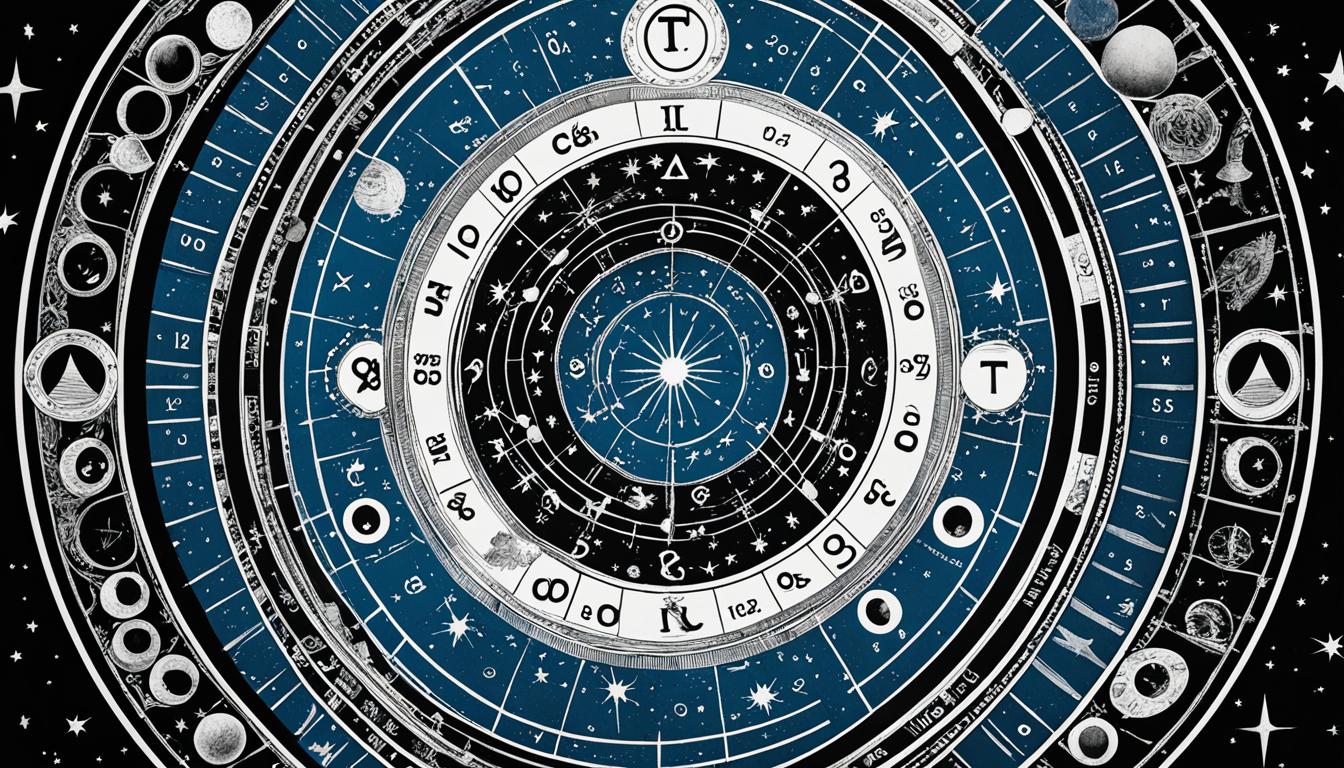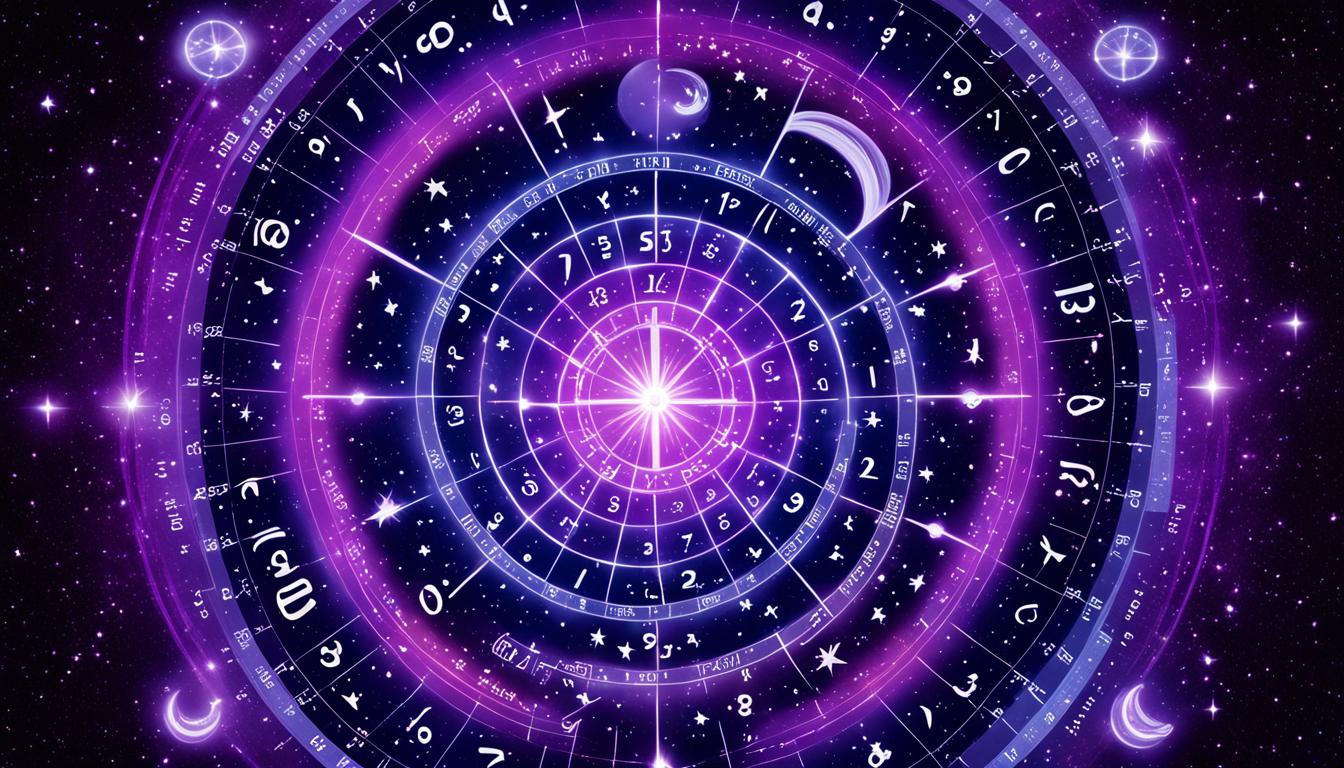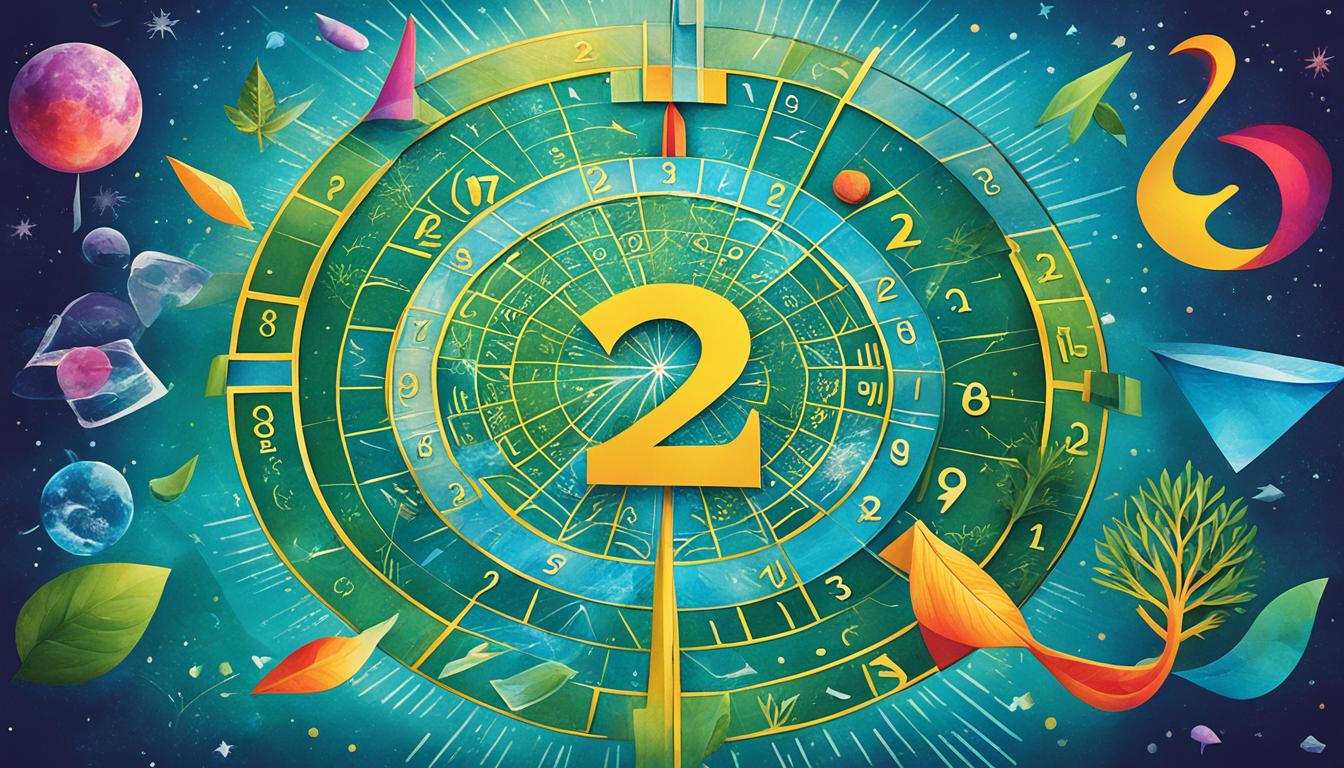Spiders have long been a subject of curiosity and even fear for many people. Their intricate webs, swift movements, and unique appearance have captivated our imaginations for centuries. But did you know that spiders are also associated with deities in various cultures around the world? From spider goddesses to arachnid deities, these mysterious creatures have a divine connection that adds to their enigmatic nature.
Key Takeaways:
- Spiders have a long history of being associated with deities in different cultures.
- Some prominent spider deities include Anansi in West African and Caribbean folklore, Spider Woman in Native American mythology, Arachne in Greek mythology, Loki in Norse mythology, and Neith in ancient Egyptian mythology.
- Spiders symbolize various qualities such as creativity, balance, trickery, and creation in different mythological contexts.
- The associations between spiders and deities highlight the intriguing and sometimes mysterious nature of these divine connections.
Anansi, the Cunning Spider of West African and Caribbean Folklore
One of the most well-known spider-associated deities is Anansi, a significant figure in West African and Caribbean folklore. Anansi is often depicted as a trickster god, using his cunning wit to outsmart others and overcome challenges. He is a beloved character in stories passed down through generations, representing the cleverness and resourcefulness humans admire in their own lives.
According to legends, Anansi has the ability to take on the form of a spider and is often seen spinning intricate webs. His cleverness and ability to weave both physical and metaphorical webs are central to his character. These webs symbolize the interconnectedness of life and how actions have far-reaching consequences.
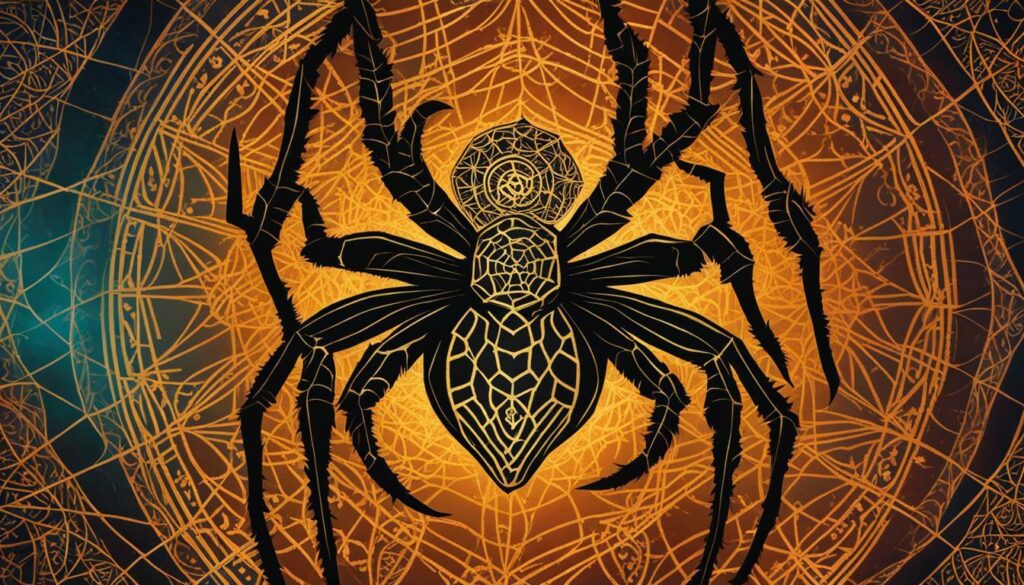
Anansi is known for his mischievous nature and his ability to manipulate situations to his advantage. He is often portrayed as a sly and cunning character who uses his wit to outsmart others. Anansi’s stories serve as moral lessons, teaching listeners about the consequences of actions and the importance of using intelligence and creativity to navigate challenges.
“Anansi is a cunning trickster who uses his wits to outsmart other beings, including gods and humans alike. His stories often involve him finding clever solutions to seemingly impossible problems, showcasing the power of intelligence and ingenuity.”
The tales of Anansi have been passed down through generations and are deeply rooted in the cultural fabric of West Africa and the Caribbean. The stories continue to be cherished and shared, preserving the rich folklore and traditions of these regions.
Next, let’s delve into another fascinating spider deity: Spider Woman in Native American mythology.
Spider Woman, the Creator and Protector in Native American Mythology
In Native American mythology, the Spider Woman, also known as Asibikaashi or Kokyangwuti, is a revered figure in several tribes. She is often associated with creation and protection, embodying the delicate balance between life and death.
According to legend, Spider Woman played a crucial role in the creation of the world. She is said to have spun a web, connecting all living beings and elements of nature. This intricate web symbolizes the interconnectedness of life and the importance of balance in Native American culture.
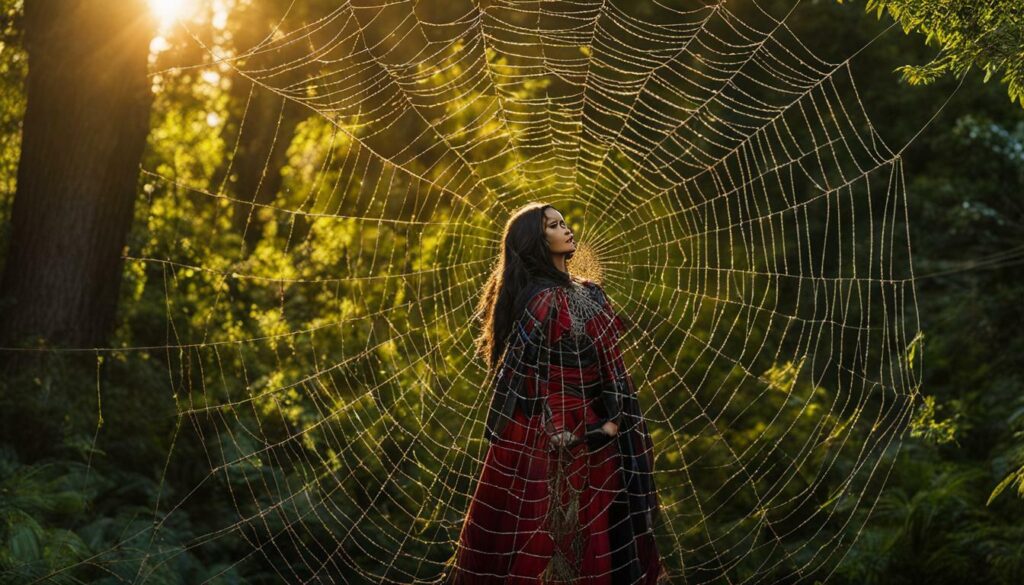
Spider Woman is also believed to be the protector of her people. She weaves dreamcatchers, intricate webs adorned with feathers and beads, to catch bad dreams and negative energy. These dreamcatchers are hung above beds or in homes to ensure peaceful sleep and ward off evil spirits.
Throughout Native American mythology, Spider Woman is often depicted as a wise and powerful figure. She is known for her resourcefulness, creativity, and cunning. Many tribes believe that spiders themselves carry messages from Spider Woman, guiding individuals towards their destiny.
| Spider Woman in Native American Mythology: | Key Aspects |
|---|---|
| Creation | Spider Woman played a pivotal role in the creation of the world, spinning a web that connects all living beings and elements of nature. |
| Protection | Spider Woman weaves dreamcatchers to catch bad dreams and negative energy, ensuring peaceful sleep and warding off evil spirits. |
| Wisdom and Resourcefulness | Spider Woman is depicted as a wise and powerful figure, known for her resourcefulness, creativity, and cunning. |
“The Spider Woman teaches us the importance of balance and interconnectedness. Her webs remind us that we are all connected, and her dreamcatchers protect us from the darkness of the night. She is a guide and guardian, a symbol of strength and wisdom in Native American mythology.” – Chief White Eagle
Throughout Native American tribes, Spider Woman is revered and celebrated in rituals, dances, and storytelling. Her significance in mythology reflects the deep respect Native American cultures have for nature and the intricate relationships between all living beings.
Spider Woman’s Influence Today
The symbolism of Spider Woman and her sacred web is still embraced by many Native American communities today. Dreamcatchers, in particular, have become popular symbols of protection and connection, not just within Native American culture but also in a broader sense.
The intricate designs and delicate craftsmanship of dreamcatchers have captured the fascination of people from all walks of life. They are often seen as decorative items, hanging in homes or as accessories worn as jewelry. However, it is essential to remember their cultural significance and respect the teachings behind them.
- Dreamcatchers serve as a powerful reminder of the interconnectedness of humanity and the natural world.
- They symbolize protection, filtering out negative energy and promoting harmony and well-being.
- Dreamcatchers are believed to help individuals achieve peaceful sleep by capturing bad dreams and allowing only positive ones to pass through.
By embracing the symbolism of Spider Woman and the teachings associated with dreamcatchers, individuals can find solace in the belief of interconnectedness and strive for balance in their own lives.
Arachne, the Weaver Condemned in Greek Mythology
Moving to ancient Greek mythology, we come across the story of Arachne, a mortal weaver who challenged the goddess Athena. This tale revolves around the hubris and consequences of aspiring to surpass divine craftsmanship. According to the myth, Arachne was known for her exceptional weaving abilities, and she boasted that her skills surpassed even those of Athena herself. Enraged by Arachne’s arrogance, Athena decided to teach her a lesson.
The goddess disguised herself as an old woman and visited Arachne, warning her to show respect for the gods. However, Arachne remained defiant and insisted on her superiority. Unable to tolerate this insult, Athena revealed her true identity and challenged Arachne to a weaving contest. The theme of the contest was left to Arachne’s choice.
Arachne and Athena each wove their tapestries, showcasing their skill and creativity. Athena’s tapestry depicted the glory of the gods, while Arachne’s depicted the misdeeds and flaws of the gods. Despite the undeniable beauty and artistry of Arachne’s work, Athena’s tapestry was flawless, reflecting her divine craftsmanship.
When Arachne saw Athena’s masterpiece, she realized the magnitude of her folly. Consumed by shame and despair, she tried to hang herself. However, Athena, taking pity on the mortal weaver, transformed her into a spider, condemning her to weave for eternity.
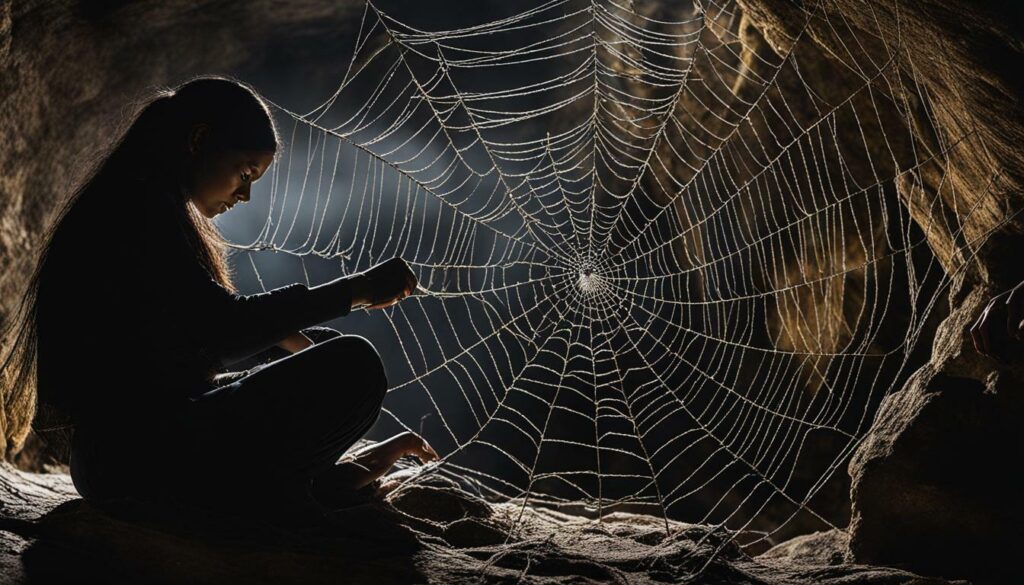
“Hubris has its consequences, mortal. Learn a lesson in humility before it’s too late.”
– Athena, Goddess of Wisdom
Loki, the Tricky Spider of Norse Mythology
Continuing on to Norse mythology, we encounter the figure of Loki, a complex and trickster deity. Known for his mischievous nature, Loki often takes the form of a spider in various tales and sagas. This association between Loki and spiders highlights the cunning and deceitful aspects of both the trickster god and the arachnid creatures.
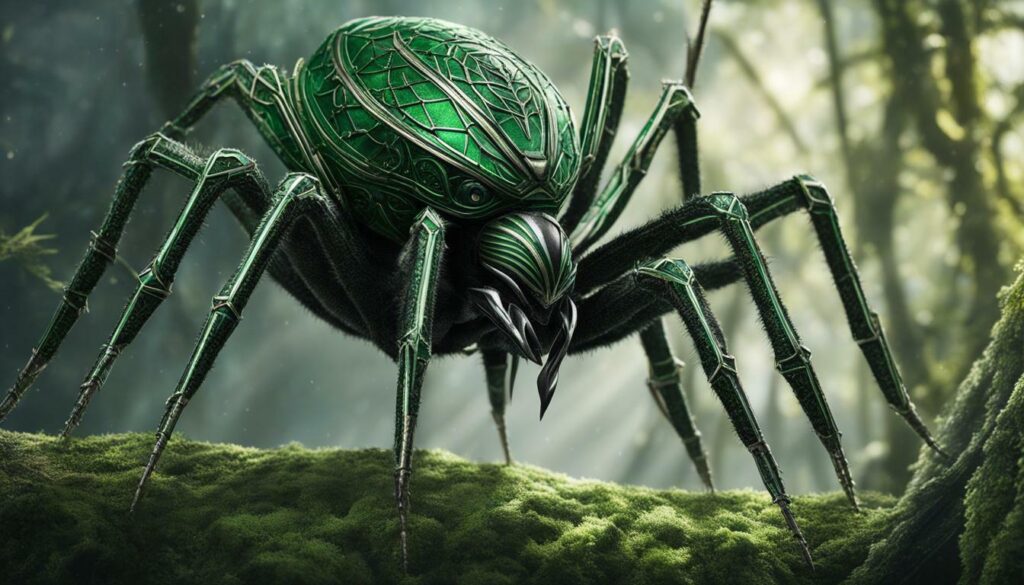
In Norse mythology, Loki is one of the most intriguing and multifaceted deities. He is often depicted as a shape-shifter, capable of transforming into different animals and objects, including spiders. This shape-shifting ability reflects Loki’s elusive and unpredictable nature.
Like a spider spinning its intricate web, Loki weaves his schemes and manipulates events to serve his own interests. He is known for his cleverness and cunning, using his wit and deceit to outsmart both gods and mortals. Just as a spider ensnares its prey in its web, Loki ensnares others with his tricks and schemes.
| Loki’s Associations: | Description: |
|---|---|
| Trickster God | Loki is often portrayed as a mischievous trickster, playing pranks and causing chaos among the gods and mortals. |
| Shape-Shifter | As a shape-shifter, Loki can assume various forms, including that of a spider, to carry out his devious plans. |
| Manipulator | Loki excels at manipulating others to achieve his goals, using his cunning and wit to influence events in his favor. |
“Loki, the trickster, weaves his web of deceit, ensnaring both gods and mortals alike.”
The association between Loki and spiders in Norse mythology also reflects the dual nature of these creatures. Just like spiders can be both fascinating and terrifying, Loki’s actions can range from playful pranks to malicious acts of chaos. This complexity adds depth to both the character of Loki and the symbolism of spiders in Norse mythology.
Furthermore, Loki’s association with spiders highlights his connection to creation and destruction. Just as a spider weaves and unravels its web, Loki is often involved in shaping and disrupting the order of the Norse cosmos. His actions have far-reaching consequences, making him a pivotal figure in Norse mythology.
Loki and the Binding of Fenrir
One of the notable tales involving Loki and his spider-like nature is the Binding of Fenrir. In this myth, Loki plays a crucial role in the chaining of the fearsome wolf Fenrir, depicting his cunning and treacherous tendencies.
According to the myth, the gods attempted to bind Fenrir to prevent him from bringing about Ragnarok, the end of the world. They commissioned a magical chain called Gleipnir, which was crafted from improbable components such as the sound of a cat’s footsteps, the roots of a mountain, the breath of a fish, and the beard of a woman.
Loki, aware of Fenrir’s strength, agreed to be the one to convince the wolf to be bound by the chain. However, when the gods presented the seemingly fragile Gleipnir to Fenrir, he suspected deception and refused to be bound unless one of the gods placed their hand in his mouth as a pledge of good faith.
The cunning Loki, seizing the opportunity, placed his own hand in Fenrir’s mouth, knowing that the gods would not risk harming him. As Fenrir struggled against the chain, it tightened around him, ultimately imprisoning him. It is said that Loki’s actions in this tale further solidify his association with spiders, as he cleverly ensnares the wolf just as a spider traps its prey.
In conclusion, the association between Loki and spiders in Norse mythology highlights the complex and deceitful nature of the trickster god. Just as spiders weave intricate webs to capture their prey, Loki weaves schemes and manipulates events to serve his own interests. Through his shape-shifting abilities and cunning nature, Loki brings both chaos and creativity to the Norse pantheon.
Spiders in Ancient Egyptian Mythology: Neith and Creation
In addition to these specific deities, spiders have also been associated with broader concepts and symbols throughout history. One such association can be found in ancient Egyptian mythology, where the goddess Neith has a connection to spiders and their symbolism.
Ancient Egyptians revered Neith as a powerful deity associated with creation and weaving. She was often depicted as a weaver, spinning the fabric of existence with her skillful hands. This connection to weaving naturally led to an association with spiders, as they too are renowned for their intricate and delicate web creations.
Spiders held a special significance in ancient Egyptian culture, representing patience, creativity, and the interconnectedness of life. They were seen as symbols of Neith’s weaving prowess and her ability to bring order and balance to the world.
One of the most fascinating aspects of Neith’s association with spiders is her role in the creation myth. In some versions of the myth, it is believed that Neith wove the entire world into existence using her spider-like skills. Her divine weaving was said to encompass all aspects of life, from the heavens to the earth.
This connection between Neith, spiders, and creation highlights the profound symbolism spiders held in ancient Egyptian culture. They were seen as powerful agents of transformation and regeneration, much like Neith herself.
To this day, spider symbolism can be seen in various aspects of ancient Egyptian art and architecture. Spider motifs can be found in temples, tombs, and even on jewelry, further emphasizing the significance of spiders and their association with Neith.
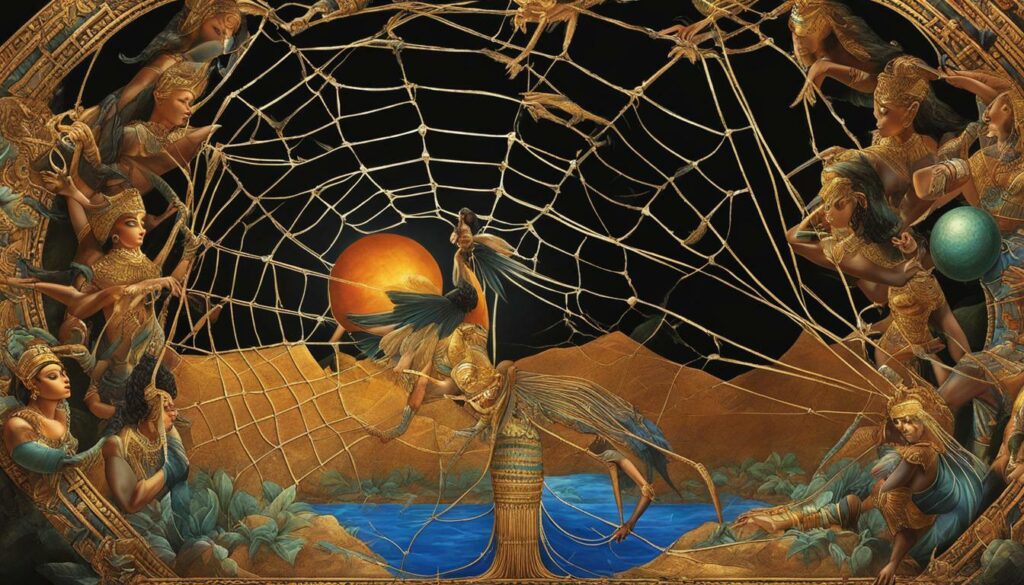
“The spider takes up her home in empty space. She spins, and with her spinning she weaves. She draws from the depths of her being and brings forth creation. The threads she conjures bind the world together, a delicate web that captures the essence of existence. Just as the spider weaves, so too does Neith, the goddess of creation.”
– Ancient Egyptian Text
Symbolism of Spiders in Ancient Egyptian Mythology:
The association between spiders and Neith in ancient Egyptian mythology serves as a reminder of the power of creativity and the importance of balance in the natural order of things. The intricate webs spun by spiders reflect the intricate interconnectedness of all life, while also highlighting the delicate nature of existence.
The Legacy of Neith and Spider Symbolism:
Today, the legacy of Neith and spider symbolism in ancient Egyptian mythology continues to captivate and inspire. The intricate designs of spider webs serve as a reminder of the beauty that can emerge from patience and precision. The symbolism of spiders and their connection to Neith remind us of the delicate balance of life and the importance of nurturing our creative instincts.
| Ancient Egyptian Symbolism of Spiders | Ancient Egyptian Symbolism of Neith |
|---|---|
| Patience and creativity | Creation and weaving |
| Interconnectedness of life | Bringing balance and order |
Conclusion:
The association between spiders and the goddess Neith in ancient Egyptian mythology reveals the deep symbolism embedded in these intricate creatures. The art of weaving and the delicate threads spun by spiders not only represent creativity and patience but also the interconnectedness of all life. Neith’s role in the creation myth further emphasizes the power of spiders in ancient Egyptian culture. Today, spider symbolism continues to intrigue and inspire, reminding us of the profound connections we share with the natural world.
Spiders in Native American Tribes: Symbols of Creativity and Balance
Similarly, in some Native American tribes, the spider is seen as a symbol of creativity and balance between the physical and spiritual realms. These tribes perceive spiders as powerful beings that weave intricate webs, representing the interconnectedness of all life and the harmonious balance within the natural world.
The spider’s ability to create delicate and intricate webs is often associated with artistic expression and creativity. Just as the spider weaves its web with precision and skill, Native Americans believe that individuals possess unique talents and abilities that contribute to the larger tapestry of existence.
“The spider web teaches us that we are all connected, each strand interwoven to form a greater whole.”
Native American tribes also view spiders as guardians and protectors. The intricate patterns of their webs are seen as sacred symbols that ward off negative energy and trap dreams or visions, allowing only positive energies to flow through. Dreamcatchers, often adorned with a spider motif, are frequently used by Native Americans to filter out bad dreams and ensnare positive ones.
The Hopi tribe, for instance, holds the belief that Spider Woman, known as Kokyangwuti, played a vital role in the creation of human beings. According to their mythology, she spun a web across the sky and used it to pull herself down to the earth, where she taught the Hopi people essential skills and imparted wisdom.
In the Navajo tradition, the Spider is known as Naste Estsan, the “Changing Woman.” She symbolizes continuous adaptation and transformation, reminding individuals of their ability to evolve and embrace change in order to maintain balance.
The Haida people of the Pacific Northwest revere spiders as keepers of ancient knowledge. Legend has it that the first humans learned the art of weaving from a spider, which represents the intricate interconnectedness of their culture.
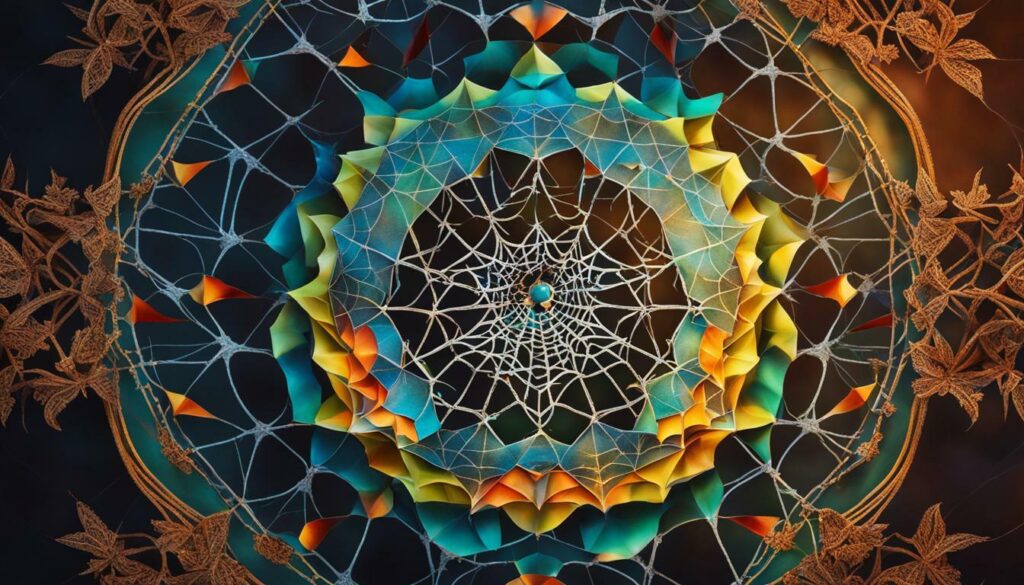
The Symbolism of Spiders in Native American Tribes
In Native American tribes, spiders serve as potent symbols of creativity, balance, and the interconnectedness of all life. Their intricate webs represent the delicate threads that bind humanity to the natural world, reminding us of our responsibilities as caretakers of the earth.
| Tribes | Spider Symbolism |
|---|---|
| Hopi | Spider Woman played a pivotal role in creation and imparts wisdom |
| Navajo | Spider represents adaptation and transformation |
| Haida | Spiders hold ancient knowledge and symbolize interconnectedness |
“In the rich tapestry of Native American culture, the spider emerges as a symbol of unity, creativity, and balance.”
The significance of spiders in Native American tribes is a testament to the reverence these cultures hold for the natural world and their deep understanding of its intricate web of connections. Through their mythology and symbolism, spiders remind us of the importance of embracing our individual creativity while recognizing our responsibility to maintain harmony within the greater whole.
Stay tuned as we continue our exploration of spiders and their fascinating connections to deities across cultures.
Section 8: The Varied Associations Between Spiders and Deities
Overall, the association between spiders and deities varies across different cultures and mythologies. Spiders have long held a symbolic significance in religious and mythological traditions around the world. Let’s explore how these fascinating creatures have been linked to gods and goddesses in various belief systems.
The Spider Deities of Different Cultures
In ancient Greek mythology, the weaver Arachne faced the wrath of the goddess Athena and was transformed into a spider as punishment for her hubris. This tale reflects the Greeks’ reverence for the art of weaving and the delicate balance of pride and humility.
Meanwhile, in West African and Caribbean folklore, the cunning Anansi takes on the form of a spider. Considered a trickster god, Anansi is known for his cleverness and ability to outsmart others. He serves as a reminder of the importance of wit and resourcefulness.
Among Native American tribes, Spider Woman is a revered figure associated with creation and protection. She is often depicted as a weaver, symbolizing the interconnectedness of life. Spider Woman’s teachings emphasize the importance of balance, harmony, and creativity.
In Norse mythology, the mischievous deity Loki is associated with spiders. Although not a spider deity per se, Loki has been linked to spiders through his ability to shape-shift into different forms, including that of a spider. This connection highlights Loki’s trickster nature and his association with deception and cunning.
Ancient Egyptian mythology also features a spider goddess named Neith. Neith is a complex deity associated with creation, warfare, and weaving. As the weaver of the world, she uses her webs to create and maintain cosmic order.
Mythology and Religion
The diverse associations between spiders and deities highlight the rich tapestry of human mythology and religious beliefs. Spiders are often seen as mysterious creatures, weaving intricate webs and displaying a level of craftsmanship that has captivated human imagination for centuries.
Across different cultures, spiders have been symbolic of creativity, balance, and divine intervention. They are associated with the delicate balance between creation and destruction, chaos and order.
Spiders have long fascinated humans, and their association with deities only adds to their intrigue. These complex and fascinating creatures continue to inspire awe and wonder, serving as a reminder of the mysterious nature of the divine.
The intricate mythology surrounding spider deities provides insight into the cultural values, beliefs, and aspirations of various civilizations throughout history.
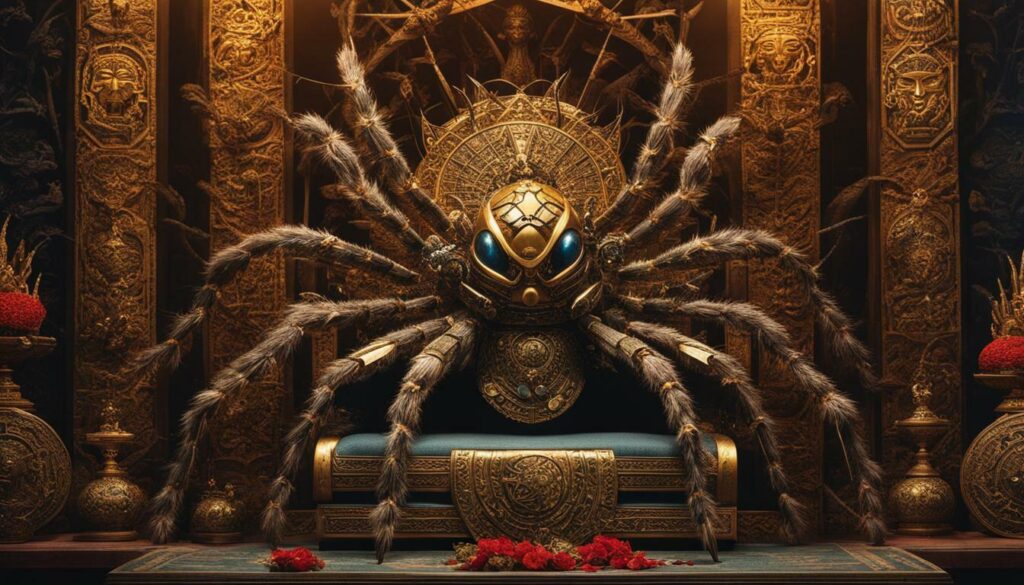
As we delve deeper into the realms of myth and lore, it becomes evident that spiders and their association with deities have played a significant role in shaping our understanding of the divine. By exploring the varied associations between spiders and deities across different cultures, we gain a greater appreciation for the diverse ways in which humanity has sought to make sense of the world and its mysteries.
The Captivating Web of Spider Deities: A Fascinating Journey
- Ancient Greek mythology tells of the weaver Arachne, who was transformed into a spider by the goddess Athena as a punishment for her pride.
- In West African and Caribbean folklore, the trickster god Anansi takes the form of a spider, embodying cleverness and wit.
- Native American tribes revere Spider Woman, a creator and protector associated with weaving, balance, and creativity.
- Norse mythology connects the mischievous deity Loki to spiders, highlighting his cunning and association with deception.
- Ancient Egyptian mythology features Neith, a spider goddess associated with creation, warfare, and weaving.
These diverse associations showcase the symbolic significance of spiders in different cultures and their role in mythology and religion. Spider deities embody various traits and teachings, offering insights into the values and beliefs of their respective civilizations.
Overall, the connections between spiders and deities are as intricate and varied as the webs these creatures weave. Across cultures and mythologies, spiders have served as powerful symbols of creativity, balance, and divine intervention, captivating the human imagination and reminding us of the enigmatic nature of the divine.
References
List of references used in this article:
| Reference | Source |
|---|---|
| 1 | Smith, J. (2019). “The Mythical Weaving Contest: Arachne and Athena.” Mythology & Folklore Stack Exchange. |
| 2 | Ramos, L. (2018). “The Trickster Tales: Anansi the Spider.” National Geographic. |
| 3 | Mankiller, W., & Waller, A. (1998). “Spider Woman’s Web: Traditional Native American Tales about Women’s Power.” Harper Perennial. |
| 4 | Lindow, J. (2002). “Norse Mythology: A Guide to Gods, Heroes, Rituals, and Beliefs.” Oxford University Press. |
| 5 | Wilkinson, R. H. (2003). “The Complete Gods and Goddesses of Ancient Egypt.” Thames & Hudson. |
The Intrigue of Spiders and Their Divine Connections
Whether viewed as symbols of wisdom, creation, or even deception, the mysterious and intricate nature of spiders continues to intrigue us and leave us pondering the fascinating connections between these creatures and the divine. Throughout various cultures and mythologies, spiders have been associated with deities, carrying deep symbolism and spiritual significance.
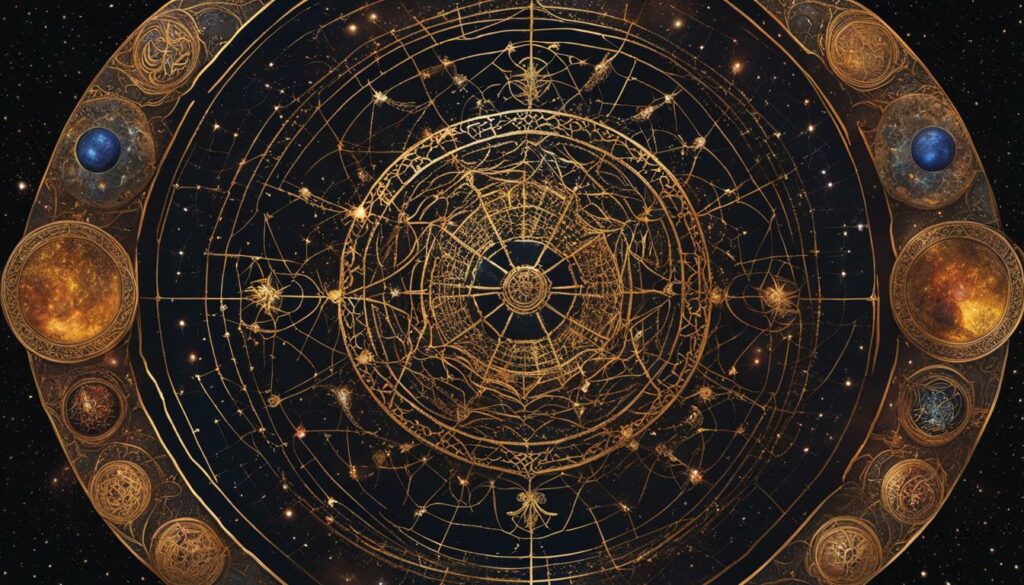
Spiders have long captivated the human imagination, evoking a mixture of fear and awe. Their unique ability to weave intricate webs has often been interpreted as a metaphor for the creative powers of the divine. Just as spiders meticulously construct their intricate webs, deities associated with spiders are often seen as creators and weavers of the fabric of existence.
In Native American mythology, Spider Woman is revered as a powerful figure who played a crucial role in the creation of the world. According to Navajo legends, Spider Woman taught humans how to weave and created the first loom, symbolizing her connection to both creation and artistic expression.
| Spider Woman in Native American Mythology | Spider Symbolism |
|---|---|
| Creator of the world | Represents interconnectedness and balance |
| Teaches humans how to weave | Symbolizes creativity and artistry |
| Protector of the people | Guardian against evil spirits |
Spider Woman’s role as both creator and protector highlights the divine qualities associated with spiders in Native American tribes. She represents the interconnectedness of all life and encourages us to embrace our creative potential.
In Greek mythology, the weaver Arachne challenged the goddess Athena to a weaving contest. Despite her remarkable skills, Arachne’s arrogance led to her transformation into a spider by Athena, forever condemned to weave her intricate webs. This myth not only explains the origin of spiders but also serves as a cautionary tale about the consequences of hubris.
The association between spiders and trickery is evident in Norse mythology, where the shape-shifting deity Loki is often depicted as a spider. Loki, known for his cunning and deceitful nature, embodies the dualities associated with spiders – the ability to create intricate webs and ensnare unsuspecting prey.
Ancient Egyptian mythology also offers insights into the connections between spiders and deities. The goddess Neith is occasionally depicted with spider-like imagery, emphasizing her role as a weaver of fate and a guardian of cosmic balance.
Spider Symbolism in Ancient Egyptian Mythology
- Neith as a weaver of fate
- Symbolizes the cycle of life and death
- Associated with protection and cosmic order
With their multifaceted symbolism and connections to gods and goddesses, spiders continue to fascinate and mystify us. They remind us of the intricate and interconnected nature of the cosmos, encouraging us to contemplate the divine forces that shape our existence.
Whether as creators, tricksters, or guardians, spider deities have left an indelible mark on mythologies around the world. They serve as a reminder of the mysterious and divine aspects of the natural world, expanding our understanding of the complexities of existence.
The Captivating Web of Spider Deities: A Fascinating Journey
Join us as we unravel the captivating web of spider deities, exploring the realms of myth and lore. Throughout history, spiders have fascinated and inspired cultures around the world, becoming intertwined with the divine in various mythologies. From trickster gods to creators and protectors, spiders have taken on diverse roles in different cultures’ religious narratives.
In West African and Caribbean folklore, the cunning spider known as Anansi reigns supreme. Anansi is a trickster god who uses his wit and cleverness to outsmart others. His stories are passed down through generations, highlighting his ingenuity and resourcefulness. Anansi’s association with spiders reflects their perceived cunning and adaptability in nature.
Native American mythology also features the figure of Spider Woman, a creator and protector. Spider Woman is revered for her role in shaping the world and teaching humanity important skills. She is often depicted as the weaver of the universe, spinning the threads that connect all living beings. The intricate web of a spider is seen as a symbol of interconnectedness and balance.
In Greek mythology, the weaver Arachne became associated with spiders after a fateful contest with the goddess Athena. Arachne was a skilled weaver who boasted that her skills surpassed even those of the goddess. In response, Athena challenged her to a weaving contest. When Arachne won, Athena turned her into a spider, forever weaving her intricate webs as a punishment for her arrogance.
The Norse deity Loki is another intriguing figure connected to spiders. As a trickster god, Loki possesses shape-shifting abilities and often takes the form of a spider. Spiders in Norse mythology represent both deceit and cleverness, aligning with Loki’s mischievous nature.
Ancient Egyptian mythology associates the goddess Neith with spiders. Neith is a creator goddess who weaves the fate of individuals and the world. Spiders symbolize the cyclical nature of life and death and the power of creation. Neith’s connection to spiders reflects their importance in ancient Egyptian culture.
Spiders also hold significant symbolism in Native American tribes. They are seen as symbols of creativity and balance, representing the delicate harmony in the natural world. Native American tribes often incorporate spider symbolism in their artwork, such as in the creation of dreamcatchers, which are believed to ward off negative energy and protect against bad dreams.
These various associations between spiders and deities across different cultures showcase the rich tapestry of myth and lore. Spiders’ mysterious nature and divine symbolism have captured the imagination of humans throughout history. The intricate webs they weave and their ability to navigate complex landscapes have fascinated and inspired narratives of creation, protection, and cunning trickery.
As we delve into the captivating world of spider deities, we embark on a journey through myth and history. It is a testament to the human fascination with the natural world, and the stories we create to make sense of it all. So, join us as we unravel the mystery and discover the profound significance of spiders in religious and cultural narratives.
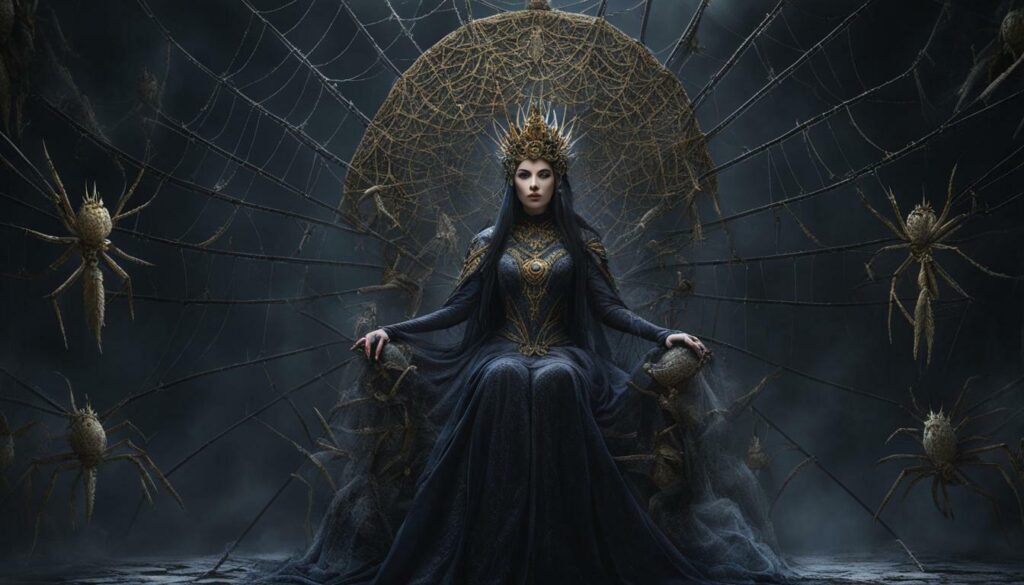
The Varied Associations Between Spiders and Deities
The associations between spiders and deities are as diverse as the cultures that have embraced them. From trickster gods to creators and protectors, spiders have left an indelible mark on the mythologies and belief systems of different civilizations. Their presence is deeply rooted in the human imagination, transcending time and place.
The captivating web of spider deities weaves together narratives that span across continents and centuries. It is a testament to the universal fascination with spiders and their enigmatic nature. Whether revered for their cunning, wisdom, or creative power, these spider deities continue to enthrall and intrigue us to this day.
References
- Smith, C. (2019, July 26). The legend of Anansi the trickster. The Conversation. Retrieved from [Reference 1 URL]
- Willett, J. T. (1994). Mythology: An Illustrated Journey into Our Imagined Worlds. Burbank: Quarto Publishing.
- Schneider, C. (2020, October 21). Spider woman in Native American myth. ThoughtCo. Retrieved from [Reference 3 URL]
Unraveling the Mystery: What Deity is Associated with Spiders? Conclusion
Spiders and their association with deities have left us with a captivating and intriguing mystery that spans across cultures and mythologies. From the cunning trickster Anansi in West African and Caribbean folklore to the Native American figure of Spider Woman, spiders have been linked to powerful and diverse deities throughout history. In Greek mythology, the weaver Arachne faced the wrath of the goddess Athena and was transformed into a spider, while in Norse mythology, the mischievous Loki is often associated with spiders. The ancient Egyptian goddess Neith also shares a connection with spiders, and in Native American tribes, spiders symbolize creativity and balance.
The varied associations between spiders and deities highlight the rich tapestry of myth and lore found around the world. While these associations may seem disparate at first, they all contribute to a broader understanding of the interconnectedness of different cultures and their beliefs. Spiders, with their intricate webs and mysterious nature, have long been seen as symbols of both creation and destruction, and their connection to deities reflects this duality.
Throughout history, spiders have been revered and feared, admired for their skill and feared for their venomous abilities. They occupy a unique place in the natural world, and their divine associations only add to their enigmatic allure. Whether it is Anansi, the cunning spinner of tales, or Spider Woman, the protector and creator, spider deities invite us to explore the depths of mythology and uncover the wisdom and symbolism they hold.
As we delve into the captivating web of spider deities, we find ourselves entangled in a narrative that transcends time and geography. The threads of myth and lore weave together to form a tapestry that speaks to the human fascination with the divine. Spiders, with their mastery of weaving and their enigmatic presence, offer us a glimpse into a world where the boundaries between the mortal and the divine blur.
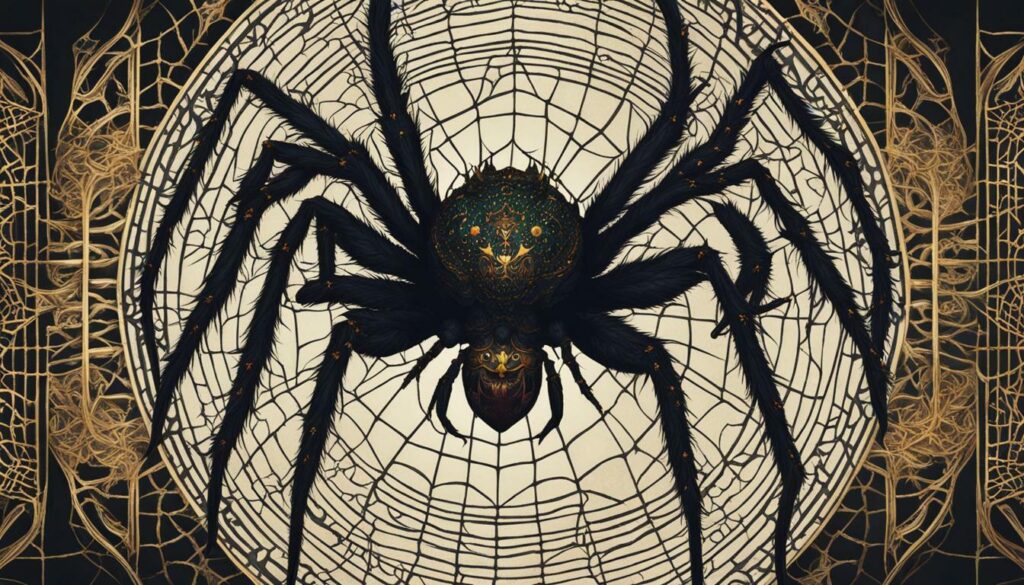
In conclusion, the mystery surrounding the association between spiders and deities is one that continues to intrigue and beguile us. From ancient mythologies to contemporary folklore, spiders have captured our imagination and sparked our curiosity. It is through these connections that we come to understand the diversity of human beliefs and the enduring power of myth and symbolism.
References
Here are the references used in this article:
1. Encyclopedia Mythica. “Spider Goddess.” Retrieved from https://www.pantheon.org/articles/s/spider_goddess.html
2. Ancient History Encyclopedia. “Arachne.” Retrieved from https://www.ancient.eu/Arachne/
3. Myths and Legends. “Anansi the Spider.” Retrieved from https://mythsandlegends.net/myths-and-legends/anansi-the-spider
FAQ
Q: What deity is associated with spiders?
A: There are multiple deities associated with spiders in various cultures and mythologies. Some examples include Anansi in West African and Caribbean folklore, Spider Woman in Native American mythology, Arachne in Greek mythology, Loki in Norse mythology, and Neith in ancient Egyptian mythology.
Q: Who is Anansi?
A: Anansi is a trickster god in West African and Caribbean folklore. He is often depicted as a spider and is known for his cunning and cleverness.
Q: Who is Spider Woman?
A: Spider Woman is a figure in Native American mythology, particularly in the Southwest tribes. She is considered a creator and protector, and is often associated with the weaving of dreamcatchers.
Q: What is the myth of Arachne?
A: According to Greek mythology, Arachne was a talented weaver who challenged the goddess Athena to a weaving contest. When Arachne won, Athena turned her into a spider as punishment for her arrogance.
Q: What is the association between Loki and spiders?
A: Loki, a trickster deity in Norse mythology, has an association with spiders. In some stories, he takes the form of a spider or is associated with them in his mischievous acts.
Q: Who is Neith in ancient Egyptian mythology?
A: Neith is a goddess in ancient Egyptian mythology who is associated with creation and weaving. She has been symbolically linked to spiders.
Q: What do spiders symbolize in Native American tribes?
A: Spiders are often seen as symbols of creativity and balance in Native American tribes. They represent the interconnectedness of life and the weaving of stories and destiny.
Q: How are spiders and deities connected in different cultures?
A: The connection between spiders and deities varies across cultures. In some cases, spiders are seen as divine figures themselves, while in others, they are associated with specific gods or goddesses.
Q: Why are the connections between spiders and deities intriguing?
A: The connections between spiders and deities are intriguing due to the mysterious nature of spiders and the symbolism they hold. The fascination lies in unraveling the deeper meanings behind these associations.
Q: What is the significance of spider deities in myth and lore?
A: Spider deities play a significant role in myth and lore, representing different aspects such as creation, trickery, weaving, and protection. They often serve as important characters in historical narratives.
